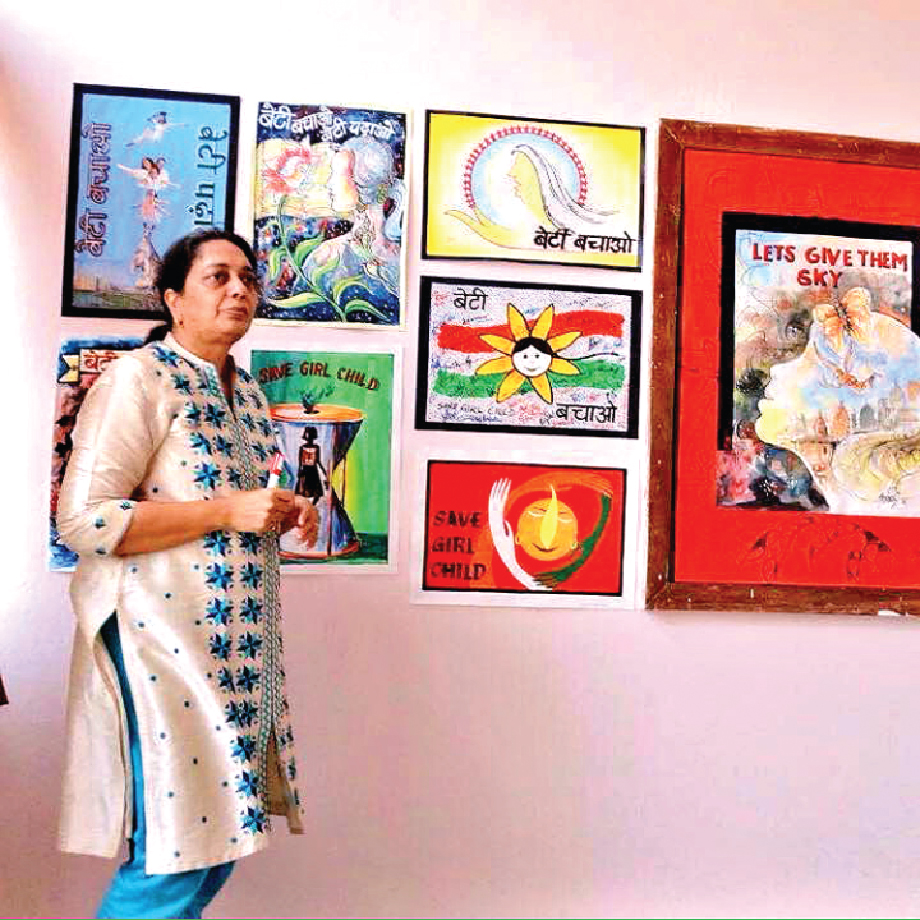 A Prof in NCERT struggles for 15 years to change the way art is taught in schools and adopt more perfect ways to enhance creativity among children
A Prof in NCERT struggles for 15 years to change the way art is taught in schools and adopt more perfect ways to enhance creativity among children
Pramod Kumar
Dr Jyotsna Tiwari, Prof and Head of Department of Education in Arts & Aesthetics in National Council of Educational Research and Training (NCERT) has been struggling for 15 years to change the way art is taught in schools and how it can help enhance creativity, observation and soft skills among children. Thanks to her efforts good initiatives have begun in some states. Since the year 2014, a two year diploma course in performing visual art has been introduced for teachers through NCTE. From this year, it is expected to be taken up by all B.Ed colleges. She is also launching an online platform for teachers. She also pioneered in organisation of Kala Utsav in Delhi last year for secondary level school children. This year will be organised from November 14 to 19.
Dr Tiwari wants to shift the way we look at art. “Art education is a very different kind of area which basically deals with enhancing soft skills, creativity and observation among children. All these come with different art forms. But now the main focus is on drawing only. But art education has much more implications. It is not limited to a textbook. It is everywhere around us. Appreciation about our own culture, history and heritage comes with the exposure of various art forms. It is not only music traditions, it is the architecture, theater traditions, dance forms, both classical and regional forms in different states, etc. These are the living traditions. Until we encourage the children to look around themselves we cannot really promote art,” said Dr Tiwari while talking to Organiser in Delhi.
All the curriculum frameworks of Education Policy talked about art education as an important area for overall development of a child. But that did not happen actually in the schools. Still it is quite marginalised, though in the NCF 2005 it was introduced as a curricular area. Even the constitutional values say every citizen should appreciate its culture and heritage. But it lacks even at the college and university level. “Instead of putting lot of emphasis on classical forms we should integrate local heritage also in it. A child studying in Bastar (Chhattisgarh) should know what is happening in his/her immediate environment and what are their traditions? Metal cast or wood work in our surrounding are also the forms of art expression. The handbook that we have prepared for teachers has many such suggestions,” adds Dr Tiwari, who before joining the NCERT was an act critic in The Hindustan Times, Bhopal.
There is one more problem with the art today. What is taught in most of the institutions is that every art form of Mughal period was very great. “We have very low self-esteem as being Indians. We are not proud of our own heritage. People go to see Taj Mahal, Qutub Minar or Red Fort, but they never appreciate to go to Qilla Rai Pithora in Delhi, which is a living monument of Prithviraj Chauhan. Half of Delhi was under Prithviraj Chauhan’s regime. But nobody knows about it and it is not taught in textbooks. My emphasis in most of the teachers training programmes is that we should appreciate our next door monuments, because they are living examples of our history and we should be proud of that I have never found two sarees of the same pattern or design. You go to market you can find lakhs and lakhs of designs. Those weavers or craftsmen have never been to a design institute. Hence, it is necessary to integrate all these things in the curriculum of not only the art but also social sciences,” she adds.
Though, some states have taken good steps in this direction, it is a long struggle. Since education is a state subject and there are lakhs of vacancies of teachers in many subjects, there is not much sensitisation to create the posts of art teachers. Unless we have trained teachers we cannot show good results.














Comments